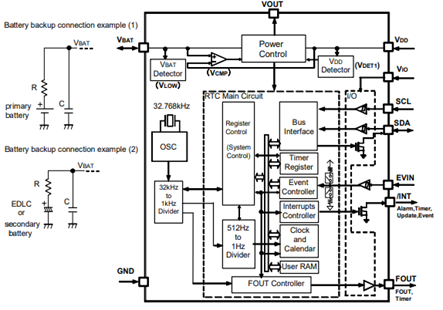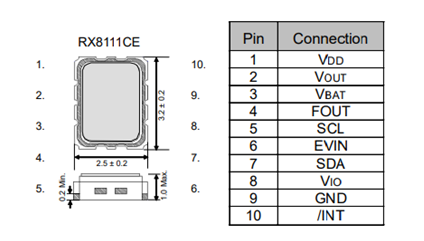POP_UP_MESSAGE_CONTENT


RX8111CE supports battery powered devices for data exchange across multiple computing chips

Figure 1 Principle Block Diagram of Real Time Clock Module RX8111CE
Adopting I2C bus communication, supporting multi processor information exchange
The RX8111CE supports bidirectional and half duplex serial communication on the I2C bus, enabling interconnection of multiple computing chips through dual wires, with low wiring requirements for single board design. In battery powered equipment, this type of module product can not only provide stable and reliable clock signals for the system, but also reduce the difficulty of product design for multi computing chips in applications. For mass production of products, the introduction of this bus is very helpful in improving the success rate of market-oriented application of products.

Figure 2: Comparison of current output between non output frequency state and 32.768kHz frequency state
When the frequency is not output, the power consumption is as low as 100nA, suitable for embedded applications powered by batteries
RX8111CE can turn off frequency output to reduce power consumption caused by the clock module in terms of functionality. After rigorous product testing, it was found that the power consumption can be reduced to 100nA without frequency output, and it can adapt to high and low temperature environments in a wide temperature range of -40 ℃ to 105 ℃. The product characteristics show high stability, with the highest power consumption not exceeding 1000nA. For battery powered devices, this low-power chip is a high-quality choice for product design. By cooperating with functional design, it can significantly increase the device usage time of the final product, creating a market advantage for manufacturers.

The clock module used for bus interaction has rich information and supports various time events
RX8111CE has rich configuration and interaction information, which can meet the various requirements of designers for clock signal processing. The timestamp function can be triggered through external event input pins, self monitoring, and software instructions set in the I2C bus. It supports time configuration from year to 1/256S. At the same time, RX8111CE supports programmable alarm function and has a wake-up timer function. The product function design of this module is based on the designer's long-term engineering application experience, specifically tailored for product design












